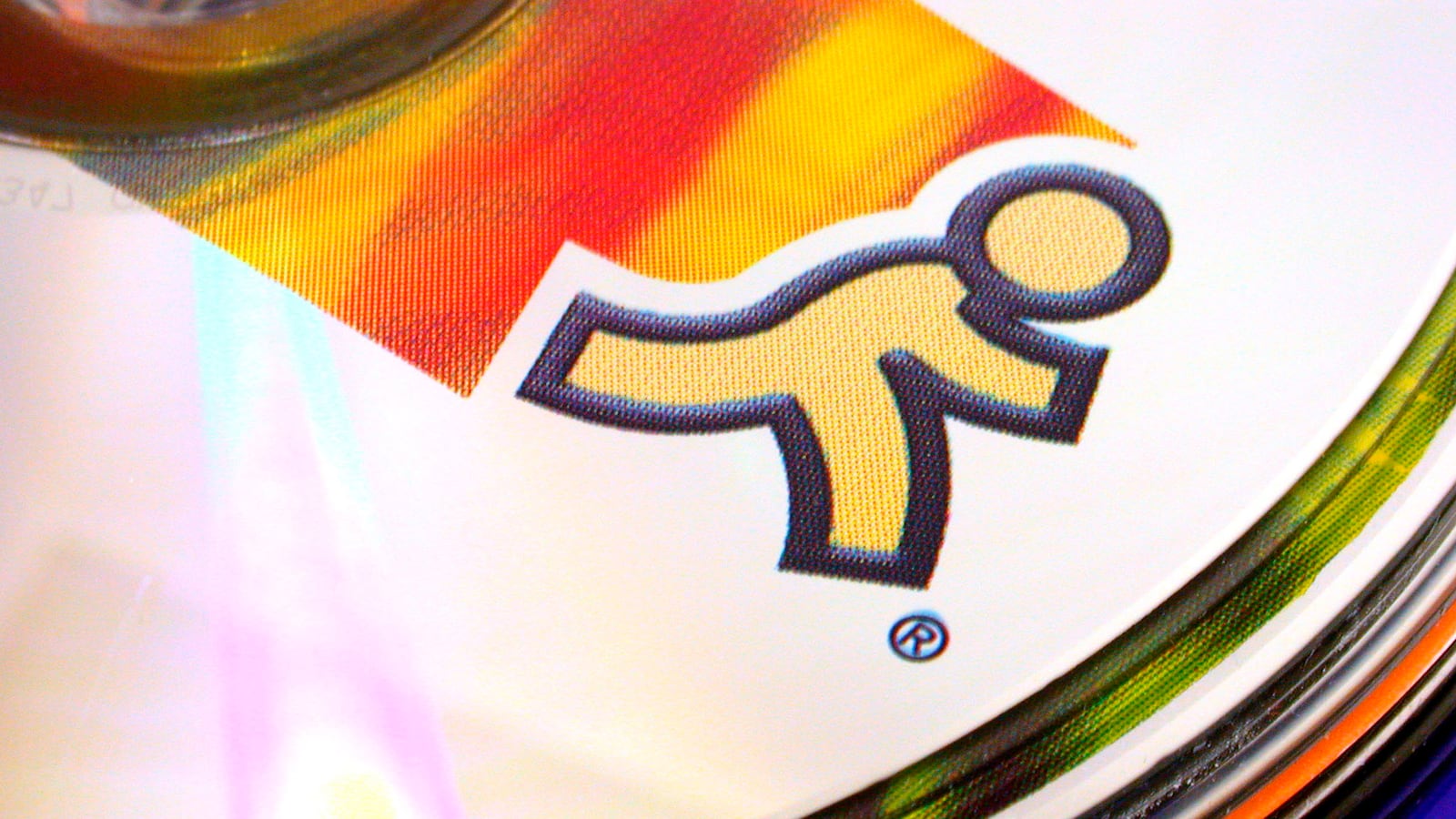Once upon a time, there was something called America Online. Not “AOL”. Not “Aol.”, either. Just good old-fashioned America Online.

America Online was a magical part of the Internet. In fact, for many of us—namely people who were born after Off the Wall but before Bad—America Online pretty much was the Internet.
Here’s how it worked. You went to your “computer room.” The den, the basement, wherever your family’s single PC—a big, clunky desktop—happened to be parked, blankly awaiting your return. You turned it on. You clicked on the triangular America Online icon.
And then you entered your screen name.
What unfolded next is a thing of the past—an ancient ritual obscured by the mists of time. You waited for the modem to connect. It dialed. It screeched. It sent out waves of anticipatory static. It probably got a busy signal. Finally, after a couple of thwarted attempts, a chipper male voice announced that you had arrived. “Welcome,” it said. “You’ve got mail.” And with that, you were free to explore the web’s pleasantest walled garden, complete with chat rooms, buddy lists, instant messages, and lots of “new kayaking friends”—at least until someone else needed to use the phone line.
All of that is gone.
Yet the America Online screen name has endured.
No one ever talks about this. Maybe it’s such a familiar fact, we take it for granted. Maybe, in some cases, it’s too embarrassing to discuss. (I’m looking at you, nsyncrulz971.) But if you’re an American between the ages of 25 and 35, I’m willing to bet that you still use your original America Online screen name to maneuver around the Internet every day—a slightly misspelled, numerically augmented alias such as lil_cheerio_23 or gettobootie37 that you came up with in 30 seconds one afternoon in 1996 after discovering, much to your chagrin, that every unnumbered, conventionally spelled name you tried was already taken.
Now, nearly two decades later, this tiny remnant of your seventh-grade self is still your default user ID. You use it to pay your mortgage at WellsFargo.com. You use it to read more than 10 New York Times articles a month. You use it to ask for breastfeeding tips on The Bump.
***
How did this happen? At the pinnacle of its success, America Online had 35 million paying subscribers, and each subscription was linked to multiple screen names—meaning that at one point, the total number of AOL screen names floating around out there probably exceeded 100 million. So simple math—there are only 78 million people in the entire Millennial generation—suggests that most of us had one of these nom d’ecrans to begin with. But how many of us have carried them into adulthood? And why have they been so hard to shake?
Statisticians haven’t gotten around to answering the first question yet, so for now, anecdotal evidence will have to suffice. Earlier this week, I asked my Facebook friends if they still used their Clinton-era AOL screen name to access other websites and services. The response was immediate and unambiguous.
“I do,” said one of my oldest pals, mere seconds after I posted. “My user name was forged on AOL and hasn’t changed since. The reasoning behind it pretty much explains all there is to know about me. Let's just say it’s a combination of Willie Mays, Neil Young, and a baseball film starring Tom Berenger.”
“Still use mine,” another buddy chimed in. “If you recall, it is a reference to a popular 1980s surf film that tells the story of an Arizona teenager who dreams of making it big. Timeless.”
The confessions continued—dozens of them. Pretty soon the comments began to sound almost cathartic, as if we’d suddenly circled up, held hands, and formed an impromptu screen-name support group.
“Firstname7lastname (7 was my high-school soccer number) continues to be my screen name … as a grown-ass professional woman.”
“I do, I do! My screen name includes the word “kitty,” but I can't let it go! I made it in 8th grade (1997) when I got my first cat. Ha!”
“Yep. My login is my junior-high AOL screen name, which I always told people came from a nickname on the basketball team. That was a lie.”
“How crazy is it that many of us have carried those AOL identities with us like a social security number? I'm just thankful mine isn’t a Dave Matthews Band lyric.”
“I am so relieved to know that there are enough people out there who latched onto these to make a story out of it. I am not alone!”
As far as I could tell, only one of my friends had managed to ditch her adolescent alias along the way—and with good reason. “My original name was kelo99,” she wrote. “I eventually changed it because I'd frequently get messages from strangers about cocaine.”
***
As I read all the responses on Facebook, I began to wonder why so many of my peers were still clinging to their original online identities—and what that says, if anything, about my generation as a whole.
I decided to get in touch with a couple of experts to help me sort it all out.
Bill Cheswick is (as a former colleague once wrote) “a network-security god; he wrote the book, literally, on firewalls, coined the term ‘proxy server,’ [and] figured out how to map the Internet.” Earlier this week, I emailed Cheswick a simple question: why do adults continue to hang onto these (usually somewhat childish) screen names?
His answer was just as simple: convenience. “It is not surprising at all,” Cheswick wrote in response. “We don't rethink our identities that often: we want to get on with our lives, seldom re-examining them. And changing screen names and passwords is a big hassle. If you have twenty accounts, you don't have a list of them: they come up over time. ‘Did I change this one already? ‘Does it have a new password or the old one?’”
Basically, Cheswick was telling me that we’re too lazy to evolve—and that can be a problem. “My guess is that your slightly-misspelled AOL screen name could be guessed within a thousand tries, and there are programs that do just that,” he warned. “There is insecurity here. An attacker needs your screen name and password. At least you can have different passwords on different accounts, and you really should. I mean it. Do it.”
Point taken. Still, I couldn’t help but suspect that there was more to the stickiness of these vintage screen names than inertia. And so I went to straight to the source: AOL chief architect Joe Schober, who also happens to be the company’s longest-serving employee.
As soon as we started chatting, it was clear that Schober (who doesn’t speak for his employer) agreed with my hypothesis. His theory? That America Online made the screen name personal, which in turn made it particularly difficult to shed.
According to Schober, this personalization process began way back in 1985 with the terminology itself. “The founders of AOL—or really its predecessor, Quantum Computer Services— wanted to build a product that was a little friendlier,” he told me. “And one of the specific things they discussed was how to sign on. Were they going to use the word ‘login,’ or ‘handle,’ or something technical like that? But because they wanted something friendlier, they came up with the nomenclature of ‘screen name.’ It was just your name on the screen. And it entered the lexicon from there.”
As AOL evolved, this ethos of personalization began to permeate the entire user experience. Consider the chat room, or the Instant Messenger buddy list. “Before, in the 1970s and early 1980s, the Internet felt like what it was: a multiuser computer system that you were logged into,” Schober explained. “It was all very technical. But on AOL, it was like you were in a place, moving from room to room and running into friends. The technology was not all that different. But the perception changed.”
As a result, the AOL users of the 1990s—many of whom were impressionable adolescents exploring the Internet for the first time—began to identify more deeply with their online sobriquets than the techies and academics of the previous generation. “It’s all about your sense of self,” Schober continued. “Back in the day, no one ever thought that their Unix login was their ‘self.’ It was a tool you used to perform a function, like a screwdriver. But on AOL it went from being just a tool you used to ‘This is my identity. This is who I am in a very real universe.’”
Ditching a user ID is easy, in other words. Letting go of “who you are” is considerably more painful.
***
Are Schober and I overthinking this? Perhaps. But laziness doesn't really describe what I feel when I log into my accounts.
That's right: I still access a few sites by typing the misspelled name of a song by the arrogant Britpop band I was obsessed with back in 1995, because of course someone else snagged the properly spelled version before I could get to it. During the intervening years, through my teens, twenties, and now into my thirties, I could have very easily abandoned my old AOL alias and selected a new default username from the many online IDs I began to accumulate as I grew up—my university login, my work email. But I couldn’t bring myself to do it.
Sure, part of the problem is complacency; I know I’m not going to forget the name under which I spent hundreds of hours IM’ing with girls I had crushes on in high school, so why bother coming up with something else? But the bigger part of it is nostalgia. Nostalgia for a time when your real life and your Internet life weren't quite the same thing yet. When you didn't have to secure firstnamelastname.com, or else. When you weren't expected to establish your own "personal brand." When being a pimply Britpop fanatic was enough.






